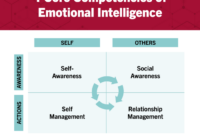As business analytics and business intelligence solutions take center stage, this opening passage beckons readers into a world crafted with good knowledge, ensuring a reading experience that is both absorbing and distinctly original.
Business analytics and business intelligence solutions provide valuable insights for businesses, enabling them to make informed decisions. If you’re interested in a career in this field, check out our guide on how to become a business intelligence analyst. By following the steps outlined in the guide, you can develop the skills and knowledge necessary to succeed in this exciting field.
Business analytics and business intelligence solutions can help businesses improve their operations, increase efficiency, and gain a competitive advantage.
In the ever-evolving landscape of business, data has emerged as the lifeblood of decision-making. Business analytics and business intelligence solutions have become indispensable tools for organizations seeking to harness the power of data to gain a competitive edge.
1. Introduction
Business analytics and business intelligence solutions are essential for businesses to make informed decisions and improve their performance. Business analytics involves analyzing data to identify trends and patterns, while business intelligence provides insights into the data to help businesses understand their customers, competitors, and market conditions.
With business analytics and business intelligence solutions, you can gain valuable insights into your business operations. Business intelligence, or BI , involves collecting, analyzing, and interpreting data to make informed decisions. These solutions empower you to identify trends, optimize processes, and gain a competitive edge in today’s data-driven market.
2. Types of Business Analytics and Business Intelligence Solutions
There are many different types of business analytics and business intelligence solutions available, each with its own benefits and drawbacks. Some of the most common types include:
- Descriptive analytics: This type of analytics provides insights into what has happened in the past. It can be used to identify trends, patterns, and relationships in data.
- Predictive analytics: This type of analytics uses historical data to predict future events. It can be used to identify opportunities and risks, and to make informed decisions about the future.
- Prescriptive analytics: This type of analytics provides recommendations on what actions to take based on data analysis. It can be used to improve decision-making and to optimize business processes.
3. How to Choose the Right Business Analytics and Business Intelligence Solution

When choosing a business analytics and business intelligence solution, there are a number of factors to consider, including:
- The size and complexity of your business: The larger and more complex your business, the more likely you will need a more sophisticated solution.
- The types of data you need to analyze: Some solutions are better suited for analyzing certain types of data than others.
- Your budget: Business analytics and business intelligence solutions can vary in price, so it is important to find one that fits your budget.
4. Implementing Business Analytics and Business Intelligence Solutions
Once you have chosen a business analytics and business intelligence solution, it is important to implement it properly. This involves:
- Gathering data: The first step is to gather the data that you need to analyze. This data can come from a variety of sources, such as your CRM system, your website, and your social media accounts.
- Cleaning and preparing data: Once you have gathered your data, you need to clean and prepare it for analysis. This involves removing duplicate data, correcting errors, and formatting the data in a consistent way.
- Analyzing data: Once your data is clean and prepared, you can begin to analyze it. This can be done using a variety of techniques, such as statistical analysis, machine learning, and data visualization.
- Interpreting results: Once you have analyzed your data, you need to interpret the results. This involves identifying trends, patterns, and relationships in the data, and drawing conclusions about what the data means.
- Taking action: The final step is to take action based on the insights that you have gained from your analysis. This could involve making changes to your business processes, launching new products or services, or entering new markets.
Final Summary

As we look towards the future, it is evident that business analytics and business intelligence solutions will continue to play a pivotal role in shaping the success of organizations.
By embracing these powerful tools, businesses can unlock the full potential of their data, empowering them to make informed decisions, optimize operations, and drive growth in the years to come.
Harnessing the power of business analytics and business intelligence solutions empowers businesses to make data-driven decisions. By integrating artificial intelligence, businesses can enhance these solutions to automate processes, improve efficiency, and gain deeper insights.
These advanced capabilities enable businesses to stay ahead in today’s competitive landscape, where leveraging technology is crucial for success.
Business analytics and business intelligence solutions continue to evolve, offering businesses the tools they need to make informed decisions and drive growth.




